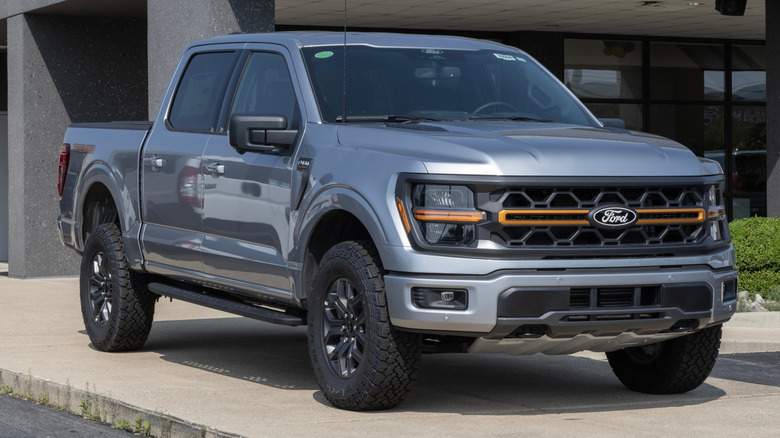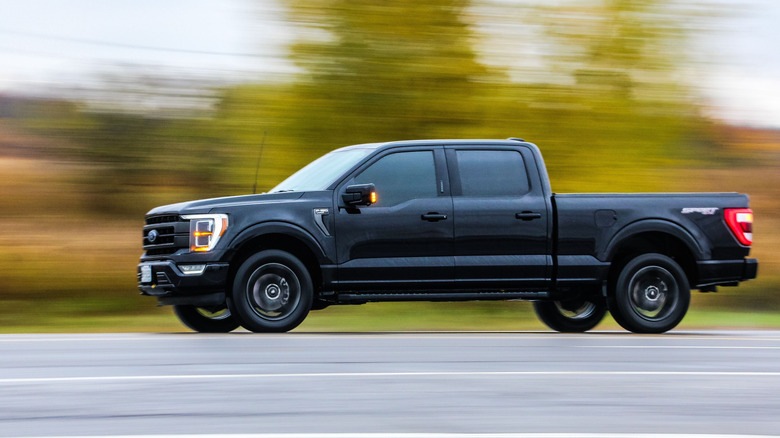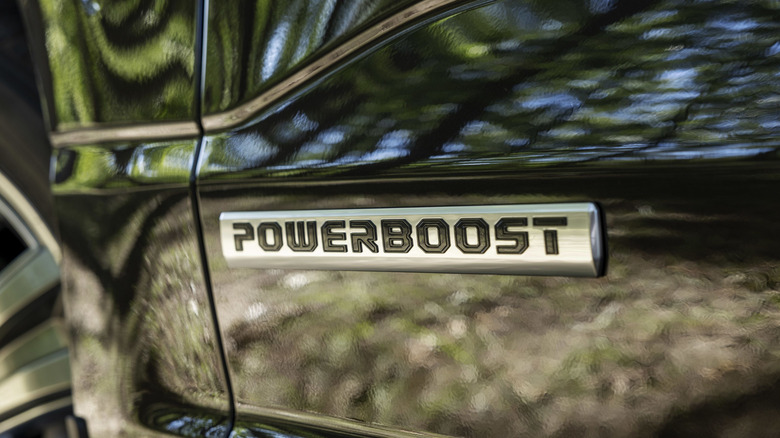Does Ford Make An EcoBoost Hybrid?
These days, most automakers around the world feature several "economy-based" models, and Ford is no exception. In fact, it was the driving force behind the development of its turbocharged EcoBoost engine line — making a fuel-efficient powertrain that doesn't skimp on excitement or functionality. Whether or not they succeeded is a case-by-case basis, with the EcoBoost encompassing a whole plethora of different configurations.
One of the EcoBoost's best-received incarnations pairs it with Ford's hybrid powertrain, combining the electric motor's instant torque delivery with the high-end fuel economy of a small-displacement turbocharged engine. Called the PowerBoost, Ford introduced the option for the 2021 F-150, with the powertrain remaining a staple of the model line ever since. According to Ford's original press release, it represents the most torque a standard-model F-150 ever boasted thanks to the electric motor, with a combined 430 horsepower and 570 pound-feet of torque. Not quite Ford Lightning levels of torque, but certainly respectable figures for its class. The PowerBoost replaced the outgoing Power Stroke turbo diesel engine option for the F-150, which was discontinued for model year 2021 due to low customer demand in favor of the 3.5-liter EcoBoost.
In theory, this powertrain combines the merits of a diesel and the EcoBoost, rounding out the model line's diverse selection of engine options with something more optimized for economy-minded towing performance. Here's how it works and whether or not it performs this job as well as advertised.
What is a PowerBoost and its basic features?
Put simply, a PowerBoost-equipped F-150 houses a standard 3.5-liter EcoBoost V6 coupled to an electric motor with a 1.5-kWh battery which supplies usable power and doubles as an electric generator for power tools. It's not the first pickup truck in its class to feature a hybrid powertrain; that title goes to the GMT900 Silverado. The PowerBoost's electric motor produces 47 horsepower but only lends an extra 30 horsepower and 70 pound-feet of torque to the overall numbers. Depending on model year, this provides the F-150 with respectable performance and an outstanding launch, including a 0-60 mph time around the 5-second range, though where it really shines is in the towing capacity.
The way electric motors work means that, unlike a traditional gasoline-powered internal combustion engine, an electric motor produces all of its torque instantly. This makes the PowerBoost uniquely well-suited to heavy acceleration under load and in hauling heavier loads. Theoretically, it can utilize far more usable torque off the line than a standard gas-powered model, helping the truck build momentum without using heaps of fuel. Moreover, the regenerative-battery technology enables more economical city-driving with 22 MPG city mileage, and allows the truck to run at idle or occasionally gas-free at highway speeds.
Its other notable feature comes when you arrive at the job site: Namely, that the electric motor turns equipped trucks into mobile electric generators. Available with a 2.4-kW onboard power unit called Pro Power Onboard, this system provides enough energy to run anything from power saws to jackhammers, further increasing the F-150's versatility as a work truck.
Additional benefits of the PowerBoost hybrid
When compared to the standard EcoBoost-equipped F-150, the PowerBoost offers a far broader range of capability for a fairly marginal price increase in relation to the total MSRP of the truck, in addition to fuel-efficiency improvements. It remains a tantalizing option for its power figures, the Pro Power Onboard upgrades, and the instant torque advantage afforded by the hybrid powertrain. Plus, not many other pickup trucks can feasibly power a small home in a pinch without any modification.
That said, the actual MSRP is quite steep, with some trims being over double the average starting price of a hybrid-equipped vehicle in the United States. A base-model PowerBoost actually isn't bad, certainly when weighing in the utility advantages such a truck offers at the job site. Overall, a PowerBoost-equipped Ford is a superb vehicle for both suburban and utilitarian owners.
On the downside, the electric motor does add more complications, which may not be to the taste of DIY mechanics, and the price tag may present its own hurdle. That said, coupled with the standard 10-speed automatic, a PowerBoost offers a significant economic and performance improvement over a standard EcoBoost while maintaining identical 14,000-pound towing capacity, albeit with less payload capacity. It's a truck that requires one to pay more up-front but will save more in the long-term as a result.


